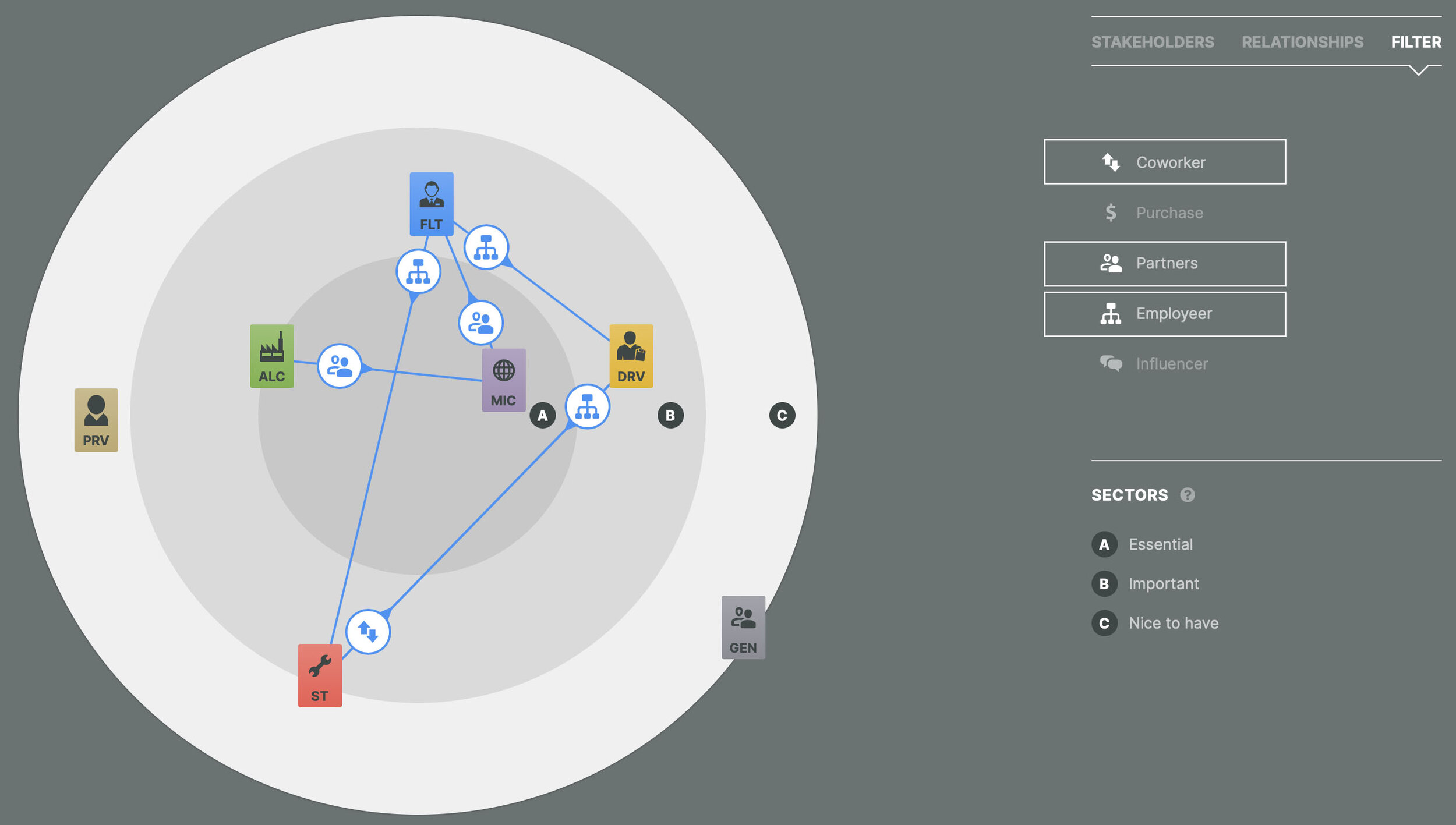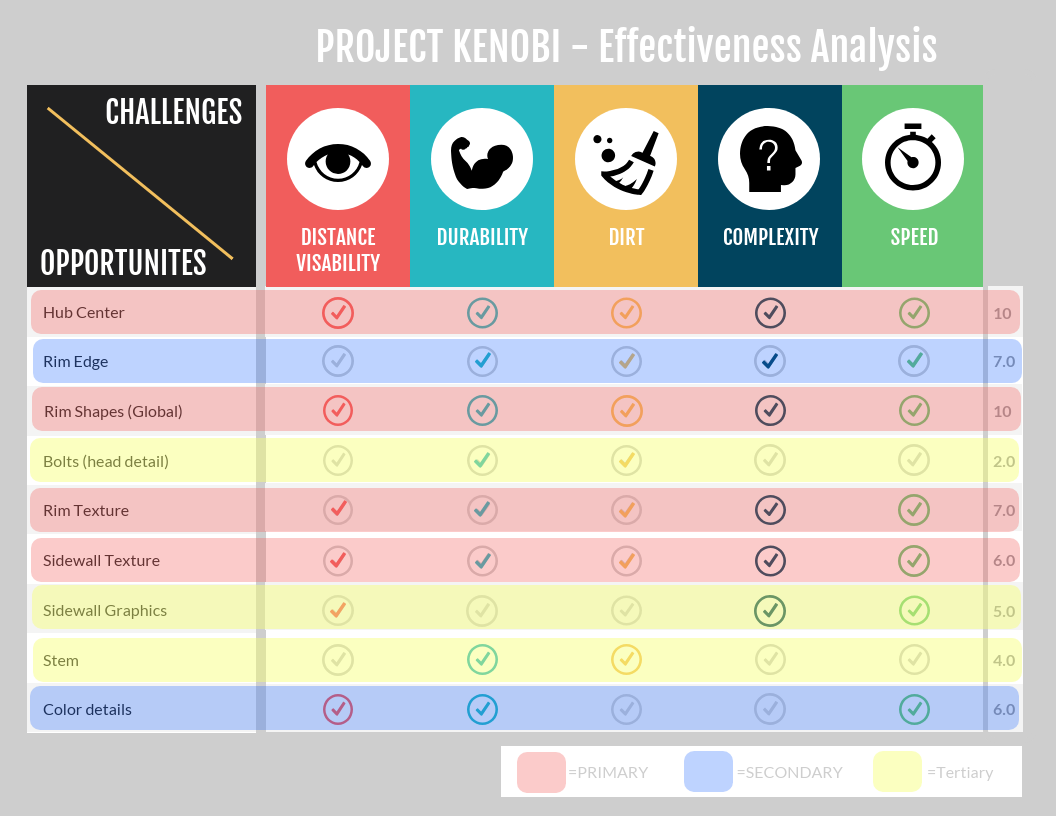
MICHELIN TIRES- PROJECT KENOBI
Michelin’s business is tire innovation. Two years ago Michelin began selling a revolutionary new tire engineered for semi-trucks and promising radically improved durability and fuel efficiency - where this one tire could replace the two adjacent tires on all semi-trucks. The benefits over current tires are clear but there were a number of reasons it did not saturate the market as expected. For example, the new tire about an inch wider than the current tires in the market which meant every wheel would need to be replaced to accommodate the new tire (adding increased cost and complexity). The new tire also required different air pressure than standard tires (a safety concern). Also, the new tire just didn’t look special or any different from standard tires (did not highlight its inherent benefits - or tell a visual story). Therefore, the project failed to gain traction and market share. Michelin needed to develop a strategy around the new product at launch and fully consider the product ecosystem.
I was brought on to consult for the redesign and relaunch of this product. Our goal is to DISRUPT the semi-truck tire industry. Some of the services I provided were: user experience research, user experience design, mapping multiple stakeholders’ points-of-view, crafting a compelling story (reasons to buy), solving system challenges, and designing product concepts. I also offered a holistic design strategy that is leading to a successful relaunch. Michelin is now in the process of applying for 2 functional patents and 1 safety patent based on my work.
1_STAKEHOLDER MAPPING:

Above is a Stakeholder map that lays out the ecosystem of the product and how each stakeholder relates to each other and to the product. I decided to begin my research with this method to better understand the product landscape. I then broke out specific maps to focus on the most important relationships:
1)Influencers
2)Employer/Employee, Coworkers, and Partners
3)Purchase/Sale
From these maps, we can identify the most important players in the ecosystem to ensure their needs are met. If the stakeholder is close to the center of the map and has important or numerious connection, they were considered essential to the success of the product.



Once the key Stakeholders were identified, I created Personas to better understand each Stakeholder’s role. This allowed me to dive deeper into the product experience, i.e. how would the product function, identify necessary attributes, were there any needed visual cues, etc.
3_PERSONAS:
FLEET OWNER / DRIVER / TECHNICIAN

Each Persona had specific needs, and I looked for similar needs that could be combined between the Personas as well as important needs that were considered ‘deal-breakers’ if not met.
From here I was able to begin the design process. Now that I knew the important aspects that were needed in the product, I was able to focus on problem-solving.
3_CHALLENGES:
a)Safety - upon first sight the Technician and Driver can immediately what type of tire it is for service/repair calls
b)Aerodynamic efficiencies
c)Ownable and iconic for Michelin brand (technologically advanced)
d)Make the product stand out in a ‘sea of sameness’
Next, I defined and ranked features that solved the 4 challenges above. The process is captured in the charts below.
4_DEFINING THE FEATURE SET:


In this chart I gave weight to each opportunity by identifying how may challenges they could overcome. Based on these ratings, I created three proposals with different opportunity combinations.

5_REALIZATIONS:
a) The sidewall of the tire is a virtual billboard that was not being used to tell the story.
b) The new tires would need new wheels - why not partner with the largest wheel manufacturer and design the wheel and tire together - AS A SYSTEM.
c) The wheel and tire combination needs to speak to the advanced technologies and efficiencies they possess.
d) There is an opportunity to make the driver proud of the new products by capturing a ‘cool-factor’ in the design, thereby making the drivers influencers in the community.
e) Break them in slowly. Get everyone used to the tire/wheel combo by replacing only the front steering tires first. Prove the concept with the single steering tire, and then they will be more likely to replace all of the remaining double tire sets on the semi-truck.
6_DESIGN CONCEPTS:

TECH _ TEXTURAL

ROBUSTO

AERO
All of these designs were shared with the key Stakeholders. I presented the concepts and performed interviews with each Stakeholder in order to make revisions and adjustments. The texturing of the tire’s sidewall matching the texture on the wheel became the most important and identifiable attribute. This feature design element solved for a number of the challenges defined by the Personas.
The Aero concept garnered the most positive reactions from both the Michelin team and the Stakeholders. It was clear that we needed to continue refining this concept.
7_REVISIONS:
1)It needed more openings for brake cooling
2)Too unique in the asymmetric design
3)Increase the tire’s sidewall texture
4)Redesign with no cover to expose lugs

8_SOLUTION:


9_CONCLUSION:
Michelin and all Stakeholders are excited and anticipating a shift toward the Michelin Kenobi Tire in the coming months. Michelin is in the process of writing 3 patent applications for this product:
1)Texture matching - Tire and Wheel
2)Air Stem color callout - a new system to signify air pressure amounts
3)Brake cooling aero - combining aerodynamic wheels + cooling
NEXT STEPS:
Michelin and I discussed creating an EFFICIENCY SYSTEM for semi-trucks; where wheels, tires, and aerodynamic add-ons could be part of a larger system to improve fuel consumption. Michelin could take our sidewall texture and apply it to all physical parts of the efficiency system.
The next step could be to digitize and gamify the system with an App that tracks the efficiencies gained when new system components are added to the semi-truck. This would allow drivers to compete on efficiency and highlight the product with important influencers. This would have the obvious and important added benefit of reduced pollution and disrupting the industry.